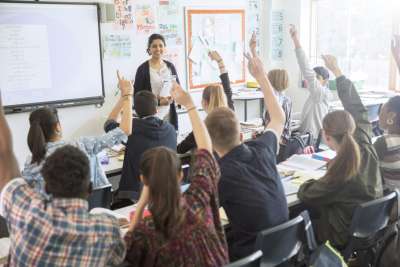Problem-Solving
Jabberwocky
Problem-solving is the ability to identify and solve problems by applying appropriate skills systematically.
Problem-solving is a process—an ongoing activity in which we take what we know to discover what we don't know. It involves overcoming obstacles by generating hypo-theses, testing those predictions, and arriving at satisfactory solutions.
Problem-solving involves three basic functions:
Seeking information
Generating new knowledge
Making decisions
Problem-solving is, and should be, a very real part of the curriculum. It presupposes that students can take on some of the responsibility for their own learning and can take personal action to solve problems, resolve conflicts, discuss alternatives, and focus on thinking as a vital element of the curriculum. It provides students with opportunities to use their newly acquired knowledge in meaningful, real-life activities and assists them in working at higher levels of thinking (see Levels of Questions).
Here is a five-stage model that most students can easily memorize and put into action and which has direct applications to many areas of the curriculum as well as everyday life:
Expert Opinion
Here are some techniques that will help students understand the nature of a problem and the conditions that surround it:
- List all related relevant facts.
- Make a list of all the given information.
- Restate the problem in their own words.
- List the conditions that surround a problem.
- Describe related known problems.
It's Elementary
For younger students, illustrations are helpful in organizing data, manipulating information, and outlining the limits of a problem and its possible solution(s). Students can use drawings to help them look at a problem from many different perspectives.
Understand the problem. It's important that students understand the nature of a problem and its related goals. Encourage students to frame a problem in their own words.
Describe any barriers. Students need to be aware of any barriers or constraints that may be preventing them from achieving their goal. In short, what is creating the problem? Encouraging students to verbalize these impediments is always an important step.
Identify various solutions. After the nature and parameters of a problem are understood, students will need to select one or more appropriate strategies to help resolve the problem. Students need to understand that they have many strategies available to them and that no single strategy will work for all problems. Here are some problem-solving possibilities:
Create visual images. Many problem-solvers find it useful to create “mind pictures” of a problem and its potential solutions prior to working on the problem. Mental imaging allows the problem-solvers to map out many dimensions of a problem and “see” it clearly.
Guesstimate. Give students opportunities to engage in some trial-and-error approaches to problem-solving. It should be understood, however, that this is not a singular approach to problem-solving but rather an attempt to gather some preliminary data.
Create a table. A table is an orderly arrangement of data. When students have opportunities to design and create tables of information, they begin to understand that they can group and organize most data relative to a problem.
Use manipulatives. By moving objects around on a table or desk, students can develop patterns and organize elements of a problem into recognizable and visually satisfying components.
Work backward. It's frequently helpful for students to take the data presented at the end of a problem and use a series of computations to arrive at the data presented at the beginning of the problem.
Look for a pattern. Looking for patterns is an important problem-solving strategy because many problems are similar and fall into predictable patterns. A pattern, by definition, is a regular, systematic repetition and may be numerical, visual, or behavioral.
Create a systematic list. Recording information in list form is a process used quite frequently to map out a plan of attack for defining and solving problems. Encourage students to record their ideas in lists to determine regularities, patterns, or similarities between problem elements.
-
Try out a solution. When working through a strategy or combination of strategies, it will be important for students to …
Keep accurate and up-to-date records of their thoughts, proceedings, and procedures. Recording the data collected, the predictions made, and the strategies used is an important part of the problem solving process.
Try to work through a selected strategy or combination of strategies until it becomes evident that it's not working, it needs to be modified, or it is yielding inappropriate data. As students become more proficient problem-solvers, they should feel comfortable rejecting potential strategies at any time during their quest for solutions.
Monitor with great care the steps undertaken as part of a solution. Although it might be a natural tendency for students to “rush” through a strategy to arrive at a quick answer, encourage them to carefully assess and monitor their progress.
Feel comfortable putting a problem aside for a period of time and tackling it at a later time. For example, scientists rarely come up with a solution the first time they approach a problem. Students should also feel comfortable letting a problem rest for a while and returning to it later.
Evaluate the results. It's vitally important that students have multiple opportunities to assess their own problem-solving skills and the solutions they generate from using those skills. Frequently, students are overly dependent upon teachers to evaluate their performance in the classroom. The process of self-assessment is not easy, however. It involves risk-taking, self-assurance, and a certain level of independence. But it can be effectively promoted by asking students questions such as “How do you feel about your progress so far?” “Are you satisfied with the results you obtained?” and “Why do you believe this is an appropriate response to the problem?”
















